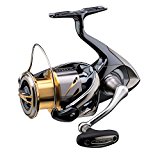Bull Trout An Introduction
Bull Trout (Salvelinus confluentus) and the Dolly Varden (Salvelinus malma) are often confused even though it’s easy to tell the two apart with little bit of knowledge and effort. These fish are far from twins.
To make matters worse the Internet has allowed a lot of people to pass as experts furthering the confusion. Even some publications falsely identify the two fish. There’s a lot of published journals and scientific literature with mistakes about the Bull Trout and Dolly Varden.
You’ll read that the Dolly Varden and Bull Trout are separate species. That the Bull Trout is a sub species of the Dolly Varden and that the Bull Trout is a localized version of the Dolly Varden. You will even read that the Bull Trout is a sub species of the Arctic Charr.
We have verified from several high profile fishing literature to confirm the facts about each fish and triple checked their data.
Bull Trout Appearance
The Bull Trout is much more slender than the Dolly Varden. It has the appearance of being more like a mackerel in shape whereas the Dolly Varden is more rounded with wider hips, so to speak.
The Bull Trout is a member of the Salmonidae family, which is a member of the Charr group.
How it got its name
We were not able to definitively identify how the Bull Trout got its common name. It’s widely believed that it got its name because the head and mouth are much larger than other Salmonids.
From a different perspective, it has a much more slender body than other Salmonids.
Threatened Species
Bull Trout are an endangered species protected under the United States Endangered Species Act. Like other Charr, the Bull Trout prefers crystal clear water with very low turbidity.
However, the Bull Trout has a much reduced distribution and much of that area has significant logging and mining operations underway, which silt up the water.
When it comes to reproduction, they’ll not spawn unless their specific conditions are met, which is why the outlook for the Bull Trout is not good.
Bull Trout Conservation
In order to conserve what is left of the Bull Trout species, please consider catch and release, which involves more than just letting the Bull Trout go after it is caught.
Consider the use of barbless hooks and holding it until it’s ready to swim away. This will greatly increase its chances of surviving.


